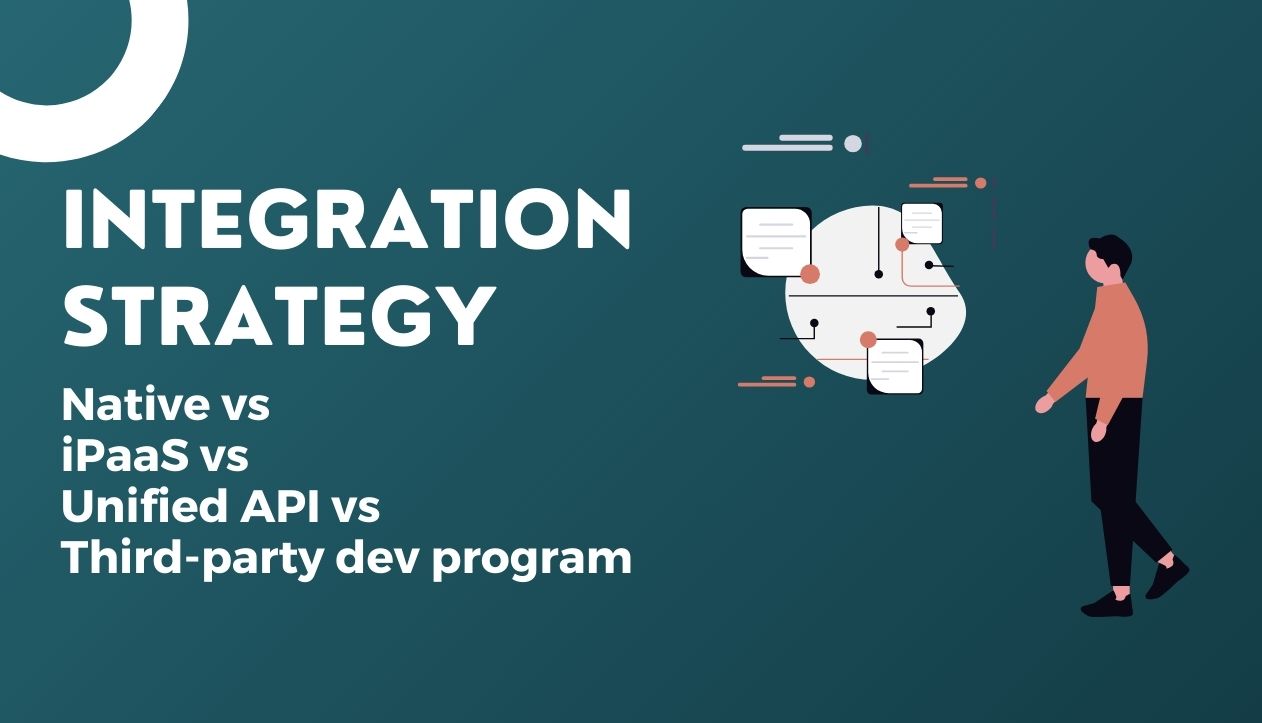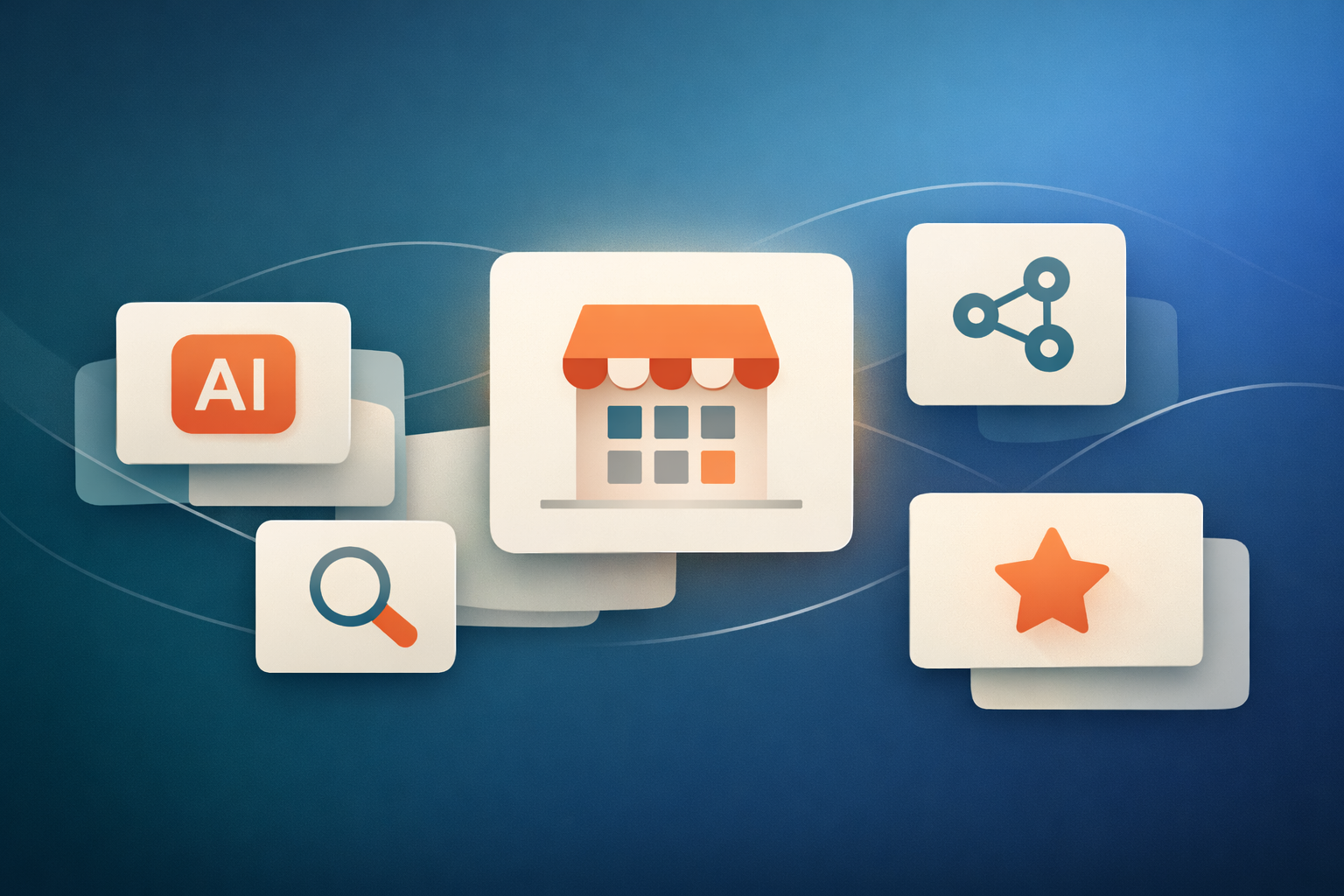If you’re a product manager or engineering leader, you already know that integrations are no longer a nice-to-have — they’re critical to product adoption, customer retention, and revenue growth.
The question isn’t “Should we build integrations?”
It’s “How should we build and scale them?”
And that’s where things get tricky.
Do you:
- Build everything in-house with native integrations?
- Use a unified API to get coverage fast?
- Leverage an integration platform (iPaaS) for prebuilt connectors?
- Or launch a third-party developer program to turn your ecosystem into a growth engine?
Each approach has tradeoffs. This guide breaks down the pros and cons of each — and makes the case for why third-party developer programs are becoming the go-to path for companies aiming to scale integrations without crushing their internal teams.
Related post: 8 ways to incentivize third-party developers to build on your APIs
Why getting this right matters
Your integration strategy directly impacts:
- Customer retention – Customers expect seamless workflows with their other tools. If you don’t have the right integrations, or they're not sending the right data, they’ll find another tool that does.
- Developer efficiency – Building and maintaining integrations can drain your team’s capacity for months, sometimes years. The right strategy helps you avoid burnout and drowning resources.
- Revenue growth – A strong integration ecosystem can drive upsells, stickiness, and entirely new revenue streams.
- Product positioning – In crowded markets, the platforms with robust ecosystems win. Every time.
Choosing the wrong approach can lead to slow integration velocity, wasted resources, or brittle partnerships. The right one can transform your product into a platform — and your integrations into a compounding growth flywheel.
So let's dive into the 4 most popular options.
Option 1: Homegrown native integrations
What are homegrown integrations?
Your internal team builds and maintains every integration directly into your product.
This is the “own everything” approach. You control the code, the roadmap, the release cycles, and every aspect of the integration experience. It’s also the most resource-intensive path you can take: You’re signing up to handle everything from initial architecture to long-term maintenance, across every integration you decide to support.
Pros of homegrown native integrations:
- Full control: You own every line of code and can deeply customize functionality.
- Native experience: Integrations feel seamless, with no third-party branding or hand-offs.
- Security & compliance: You control data flows and compliance standards from end to end.
Cons of homegrown native integrations:
- High resource cost: Even well-staffed teams get overwhelmed when dozens (or hundreds) of integrations pile up.
- Slow velocity: New integrations require full dev cycles and compete with other roadmap priorities.
- Opportunity cost: Every integration you build in-house is time not spent on core product innovation.
Homegrown native integrations are best for:
Early stage ecosystem programs and companies with a small set of mission-critical integrations that require deep, custom functionality. And they need to have the resources to maintain them long-term.
Option 2: Unified API
What is a Unified API?
A single, normalized API that connects you to many others at once. Instead of building 20 separate integrations, you build one connection to the unified API provider (e.g., Merge, Finch, Rutter), and they handle the mapping to each vendor’s API.
This approach is designed for speed and breadth. You get coverage fast without managing each individual API relationship yourself. But you’re also adding a middle layer between your product and the tools your customers use, which comes with tradeoffs in flexibility and control.
Pros of a Unified API solution:
- Fast time-to-market: One integration unlocks access to many vendors.
- Simplified maintenance: The provider absorbs the work of keeping up with API changes.
- Lower initial lift: Less work for your team to stand up basic integrations.
Cons of a Unified API solution:
- Vendor lock-in: If you stop paying, your integrations stop working.
- Limited functionality: You’re constrained by their normalized data model, which makes deep customization difficult.
- Not fully native: Customers interact through a middle layer instead of your direct API.
Unified API is best for:
Companies that need to connect with a large number of third-party systems quickly, where the goal is basic coverage rather than deep, highly customized functionality. This is ideal when speed to market is more important than owning every detail of the integration experience, and when the company is comfortable relying on an external provider to manage API changes and infrastructure over the long term.
Option 3: iPaaS (Integration Platform as a Service)
What is an iPaaS?
A low-code or no-code integration platform (e.g., Workato, Tray.io, Paragon) that connects your product to others through prebuilt connectors. These platforms are designed to make integration setup fast — sometimes in hours — by letting internal teams or even customers configure connections without touching your core codebase.
The tradeoff: those integrations live in the iPaaS environment, not in your product, which means you lose some control over the user experience. And because many companies use the same connectors, your integrations may not stand out from competitors who use the same approach.
Pros of using an iPaaS:
- Rapid deployment: Users or internal teams can configure integrations without heavy coding.
- Breadth: Hundreds of prebuilt connectors cover the most common business tools.
- Less dev effort: Reduces engineering dependency for routine integrations.
Cons of using an iPaaS:
- Not native: Integrations exist outside your product’s interface.
- Ongoing costs: Subscription fees grow with usage over time.
An iPaaS is best for:
Companies that prioritize speed over control, or need to offload basic integration needs without making a major engineering investment.
Option 4: Third-party developer program
What is a third-party developer program?
You open your platform to external developers — partners, vendors, and even customers — so they can build integrations directly into your product using your APIs. This usually involves a developer portal for onboarding and governance, plus an in-app marketplace where customers can discover and install the integrations.
The appeal is obvious: you’re no longer the bottleneck for integration growth. External developers build, maintain, and even market their integrations. Over time, this can create powerful network effects — the more integrations exist, the more valuable your product becomes, which in turn attracts more developers.
Pros of a third-party developer program:
- Scales exponentially: External developers handle build and maintenance.
- Native integrations: Apps live inside your product and feel seamless to users.
- Ecosystem growth: Every new integration increases your product’s value.
- Market reach: Partners actively promote their integrations to your customers.
Cons of a third-party developer program:
- Requires orchestration: You need a polished developer experience with onboarding, docs, and workflows.
- Takes time: Ecosystems grow through steady compounding, not overnight spikes.
A third-party developer program is best for:
Companies aiming to become a platform, unlock third-party innovation, and scale integrations without overloading internal teams.
Why third-party developer programs are winning
The first three approaches — native, unified API, and iPaaS — each solve for speed or control, but they all rely on your team to keep the machine running. That means your integration roadmap always competes with core product priorities.
A third-party developer program changes the dynamic.
- You shift build and maintenance to external developers.
- You unlock new revenue streams through co-marketing, upsells, or monetization.
- You build a moat. Once developers invest in your ecosystem, switching becomes painful for them and your customers.
This is the playbook behind companies like Slack, Salesforce, and Shopify. Their ecosystems didn’t just add features — they created entire marketplaces, new revenue lines, and a level of product stickiness that competitors couldn’t match.
But building a third-party program isn’t easy
Many companies underestimate the work required. They stand up an API, publish documentation, and wait for developers to show up. That’s not how it works.
Without a clear onboarding process, credentialing, project tracking, and a way to surface finished integrations to customers, most external developers will drop off before shipping anything. The gap between “we have APIs” and “we have a thriving ecosystem” is wide — and without governance and discoverability, that gap stays wide.
What you actually need:
- Credentialing and access controls
- Project tracking and approvals
- Governance workflows to maintain quality
- An in-app marketplace so customers can find and install integrations
- Analytics to measure usage and ROI
Without these, your program will stall, and your integrations won’t ship.
How Partner Fleet helps
We built the first Developer Ecosystem Platform to bring all of these moving parts together:
- Developer portal: Onboard, guide, and approve external developers.
- In-app marketplace: Launch integrations where your customers will find them.
- Governance & analytics: Maintain quality and measure impact.
We give you the infrastructure to turn raw APIs into a thriving ecosystem, fast.
Which approach is right for you?
- Broad coverage, fast, minimal customization? → iPaaS or Unified API
- A few deep, custom integrations? → Homegrown native
- Scale sustainably, grow an ecosystem, reduce dev lift? → Third-party developer program
If that last one resonates, Partner Fleet can help you launch and scale it in weeks — not years.
Final thoughts
Integrations are no longer a checklist item — they’re a core part of your product strategy. The right approach depends on your resources, your goals, and where you see your product going.
If you’re ready to move from product to platform, unlock third-party innovation, and turn integrations into a growth engine, a third-party developer program might be your smartest long-term move.
Partner Fleet helps SaaS companies do exactly that.
Book a demo to see how you can turn your APIs into an ecosystem.




